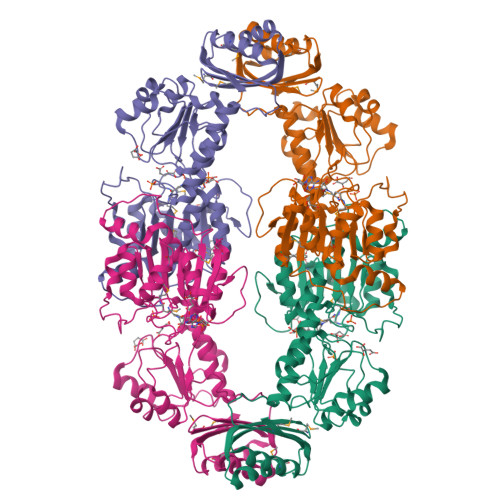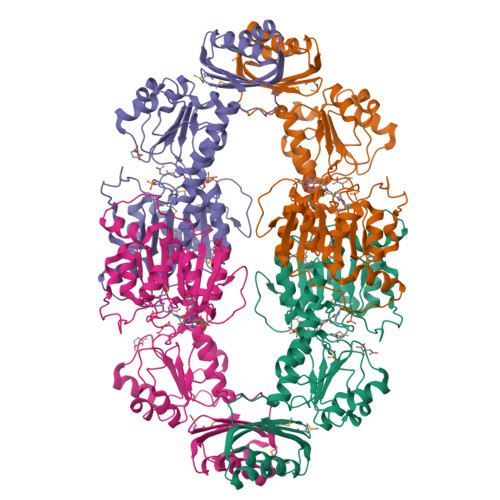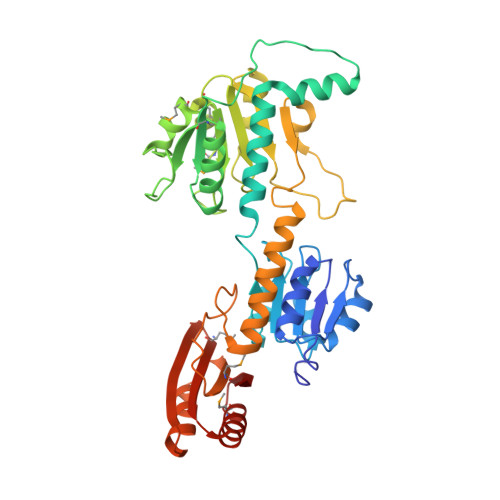Vmax Regulation through Domain and Subunit Changes. The Active Form of Phosphoglycerate Dehydrogenase
Thompson, J.R., Bell, J.K., Bratt, J., Grant, G.A., Banaszak, L.J.(2005) Biochemistry 44: 5763-5773
- PubMed: 15823035
- DOI: https://doi.org/10.1021/bi047944b
- Primary Citation of Related Structures:
1YBA - PubMed Abstract:
An active conformation of phosphoglycerate dehydrogenase (PGDH) from Escherichia coli has been obtained using X-ray crystallography. The X-ray crystal structure is used to examine the potential intermediates for V(max) regulation, for the redox reaction, and for cooperative effects of serine binding. The crystal structure at 2.2 A resolution contains bound NAD(+) cofactor, either sulfate or phosphate anions, and alpha-ketoglutarate, a nonphysiological substrate. A PGDH subunit is formed from three distinct domains: regulatory (RBD), substrate (SBD), and nucleotide binding (NBD). The crystal conformation of the homotetramer points to the fact that, in the absence of serine, coordinated movement of the RBD-SBD domains occurs relative to the NBD. The result is a conformational change involving the steric relationships of both the domains and the subunits. Within the active site of each subunit is a bound molecule of alpha-ketoglutarate and the coenzyme, NAD. The catalytic or active site cleft is changed slightly although it is still solvent exposed; therefore, the catalytic reaction probably involves additional conformational changes. By comparing the inhibited with the uninhibited complex, it is possible to describe changes in conformation that are involved in the inhibitory signal transduction of serine.
Organizational Affiliation:
Department of Biochemistry, Molecular Biology and Biophysics, University of Minnesota, Minneapolis, Minnesota 55455, USA.






















